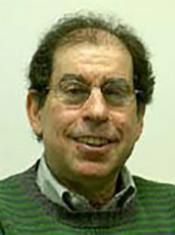Stan Finkelstein
Stanley Finkelstein received his B.S. in Electrical Engineering (1962), M.S. in Electrical Engineering (1964), and Ph.D. in Electrical Engineering, Systems Science, and Bioengineering (1969) from the Polytechnic Institute of Brooklyn in Brooklyn, New York. From 1968 to 1977, Dr. Finkelstein served as an assistant and then associate professor of Bioengineering, Operations Research and Systems Analysis at the Polytechnic Institute of Brooklyn. In 1977, Dr. Finkelstein moved to the University of Minnesota, where he joined the faculty of the Division of Health Computer Sciences in the Department of Laboratory Medicine and Pathology. Since 1977, Dr. Finkelstein has been a member of the graduate faculty in Health Informatics and in Biomedical Engineering, and since 1983 in Biophysical Sciences and Medical Physics. From 1986 to 1997, Dr. Finkelstein served as director of graduate studies in health informatics; from 1996 to 2000, as director of graduate studies in biomedical engineering; and from 2000 to 2001, as interim director of the Division of Health Informatics.
Interview Abstract
Stanley Finkelstein begins by discussing his educational background and his arrival at the University of Minnesota. He describes at length his research in the field of home monitoring and telehealth, including his research with Jay N. Cohn on the development of a device to measure and monitor arteriovascular compliance in order to diagnose and monitor hypertension and congestive heart failure; his research with Warren Warwick and the development of the first home monitoring system for cystic fibrosis patients; and the subsequent development of home monitoring of lung transplant patients in collaboration with Marshall Hertz. Dr. Finkelstein goes on to discuss the NLM training grant program; the lack of institutional support provided to the Division of Health Computer Sciences; the development of the Institute for Health Informatics; the leadership of Eugene Ackerman and Laël Gatewood; the number of women in the field of biomedical engineering and health informatics; the relationship between the Division of Health Computer Sciences and the Biomedical Library; the collaborative relationship between the University of Minnesota and the Mayo Clinic; and the development of the Masters in Health Informatics.
